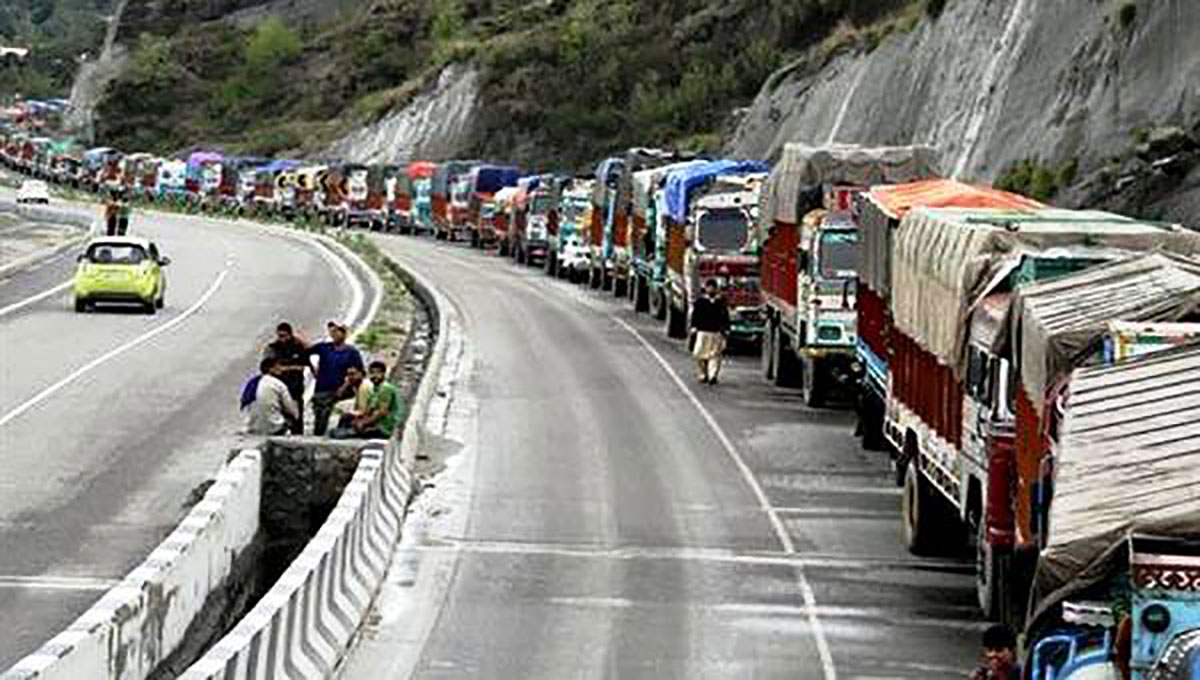The water-abundant Kashmir has always remained a chronic energy-deficit space with the chronic outages having a crippling impact on the economy and serious compromise of the twenty-first-century lifestyle. Off late, tens of thousands of people have switched over to the cleanest solar power and it generates a Rs 50 crore turnover a year. With new schemes being added to the solar basket, Yawar Hussain reports that alternative energy is emerging as a sunrise sector
Nestled in the higher reaches of Kupwara, Kakerpatti village’s 700-odd households have a panel atop their houses to catch the sunlight. This is basic to their life as it illuminates their homes.
The village was electrified for the first time in 2018. The electricity, however, continues to be a luxury seen with awe and surprise when it occasionally lights up an electric bulb.
These panels atop their houses are proof of a silent, gradual and apparently self-initiated movement for alternate electricity in Kashmir’s rural landscape where traditional energy sources have reached but failed to meet the demands of the populace. Though the demand-supply issues have plagued the water-abundant and energy-deficit Kashmir for a long time, the distant peripheries offer serious cases of unfair distribution.
Ramzan Deedhad, a resident of Kakerpatti, said that when their village had no electricity, he got a Mini-Home Lighting System, locally known as “Exide” after the company name, and installed it in 2015.
“The electricity came to our village only in 2018 but we still rely on solar power,” Deedhad said. His two rooms and kitchen have three 5-watt LED (Light Emitting Diode) bulbs installed.
Deedhad revealed the solar-powered equipment started illuminating the households in his area as early as 2009 when the government was running the Rajiv Gandhi Gramin Vidhutikran Yojna (RGGVY), which was availed by some people in the village.
“We just learnt about solar power systems from the scheme. It wasn’t a success because people with political connections got the panels and solar systems,” Deedhad alleged. The vendors who came to set up these systems not only started marketing their own products but also imparted knowledge to the village populace.
Most of the Mini-Home Lighting Systems installed in his village, he said are without government subsidy while the ones with it stopped functioning in 2012. A Mini-Home Lighting System costs around Rs 20000.
The three local mosques in the village are also now powered by solar panels affixed on the rooftop or sides.
“These systems are connected with the regular electricity connection as well. In summer, the batteries are powered by both, conventional as well as solar power, but as soon as autumn approaches, solar power becomes our saviour,” Deedadh added.
The area’s Government Middle School’s three rooms are also powered by solar power, which was installed by the local Panchayat through local donations. In winter, when the school is shut, the local kids are imparted religious education in one of the school rooms.
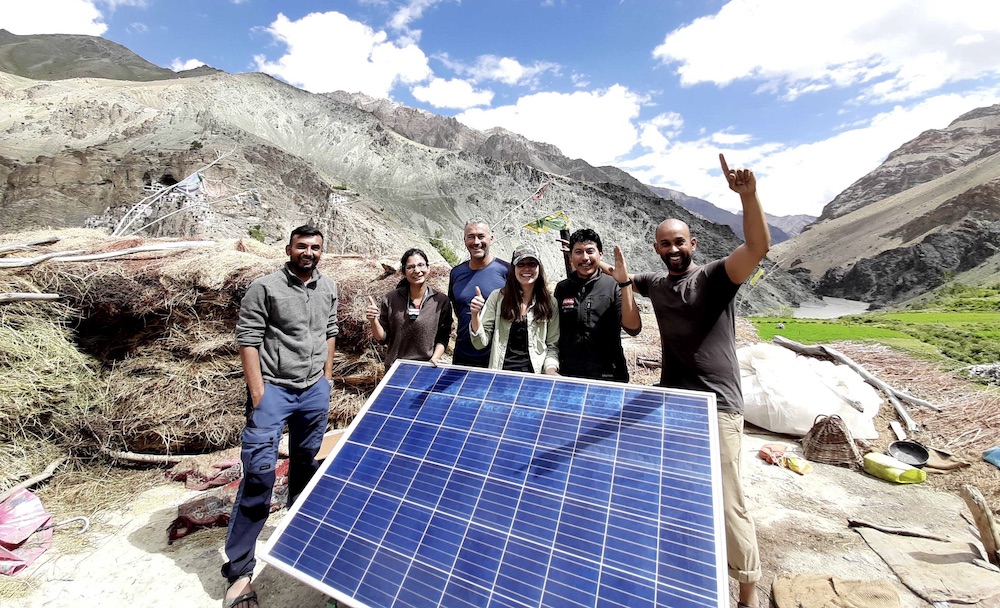
Down south, in the Halan area of Kulgam, which too is nestled in mountains, Roshan Din’s village is too connected to the solar grid with no governmental support.
Din said the solar lanterns, a common sight in Kashmir villages, still act as the main illuminator of households, which can’t afford to buy a Mini-Home Home Lighting System.
Relatively cheaper, solar lanterns are 5 to 10 watts of power and are easily portable.
Din’s family of seven has five lanterns, which aren’t just meant to lighten up their rooms but also help them as street lights which even areas in Srinagar lack.
“What could we do when we had no other alternative,” Din asked. “It became important for us because winters leave us on our own. We come up with all the arrangements from heating to lighting on our own.”
The village has 300-odd households with a non-macadamized road, which is usually not cleared of snow as the village is the last in the area.
= With the debate around production, losses, theft and eventual availability of conventional power raging on, the rural spaces in Kashmir seem to have contemplated themselves with greener energy, still not enough but more than a candle or a gas-powered incandescent mantle, which the solar power has replaced.
An official in the Jammu and Kashmir Energy Development Agency said that this gradual move to greener solar power hasn’t been powered by the environmental-friendly nature of solar energy or by it being cheaper but rather than the need for electricity in Kashmir’s rural areas where lights are out for most of the time, particularly during winters.
The movement to solar power, however, isn’t just confined to Kashmir’s rural spaces. The main government hospitals in Srinagar along with the majority of petrol pumps and scores of private schools have gone for solar power systems to cut costs, switch to green spaces as well as become self-reliant in case the traditional power is cut.
Solar Spaces
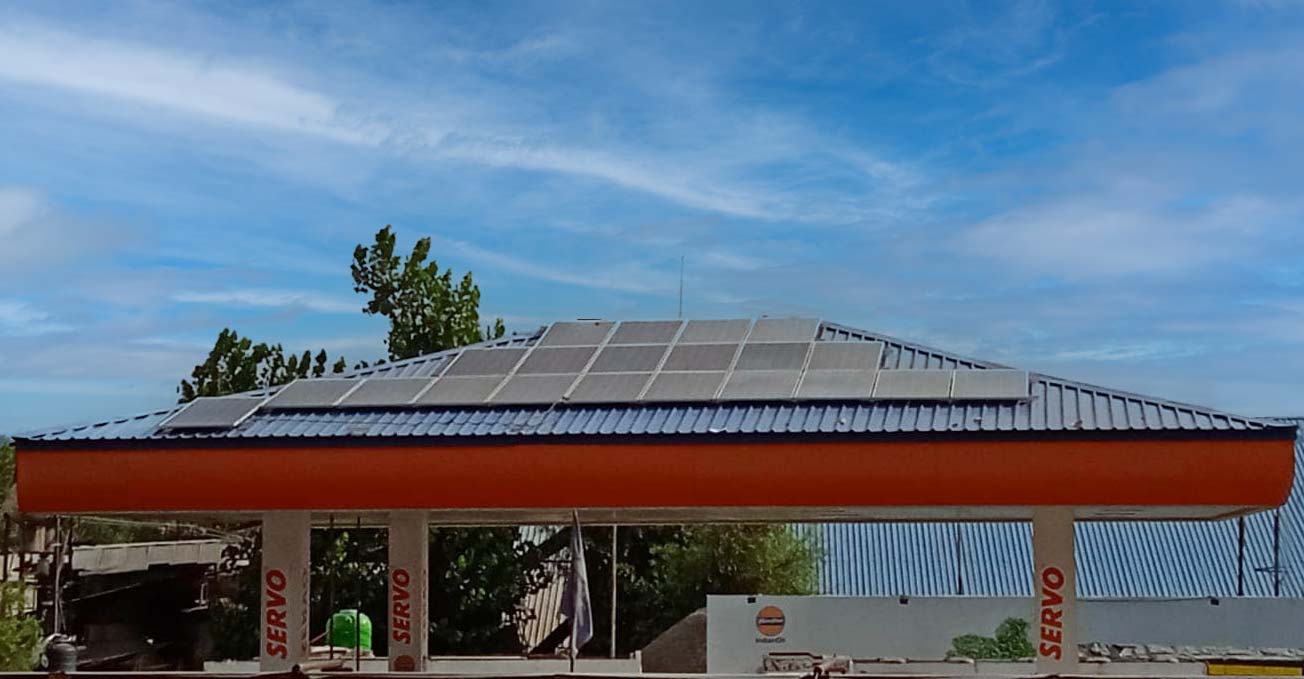
As per the Association of Solar Power Equipment Dealers of Kashmir, 70 per cent of Petrol pumps in Srinagar have already shifted to solar-powered electricity.
Tarique Qureshi, General Secretary of the Association said that the movement was started by Indian Oil Corporation (IOC), which asked all its pump owners to get solar power systems.
“The IOC funded 50 per cent of the installation cost while the other half was done through bank loans,” Qureshi said, asserting the installations are successful.
Srinagar’s all major hospitals are also powered by solar panels atop the roofs of the various buildings. The highest solar power system of 500 KW capacity has been installed at Sher-e-Kashmir Institute of Medical Sciences Soura while Government Medical College Srinagar, Chest Disease Hospital and the erstwhile Children’s Hospital also have above 250 KW each of Solar Powered systems installed.
An official in the Health Department said that while many district hospitals in Kashmir have also been connected with solar-powered systems, the department has planned to install all Community Health Centres and Primary Health Centres with solar-powered systems by 2025.
Also, some of Srinagar’s leading private schools including Burn Hall, Presentation Convent and Delhi Public School have solar-powered systems installed to meet their energy demands. Besides, many departments in the Universities of Kashmir and Jammu have already installed rooftop solar plants.
However, an official at the University of Kashmir said that many of the departments have non-functional solar units within just a few years of installation.
While the solar sector still needs to grow manifold to meet even the basic requirements of Kashmir’s energy demand, the private sector has been the major player in the market.
A Roaring Business
In the last decade beginning 2011, Kashmir’s solar landscape witnessed a boom in the installation of Home Lighting Systems, mostly in non-electrified households, which includes an inverter, a module (Solar Panel) and a battery.
In the private sector, as many as 140000 odd households have installed these Home Lighting Systems out of which more than 65 per cent have been installed in non-electrified households. The data suggests that if an average number of five people live in a household, then nearly 7 lakh people in Kashmir are using solar power.
The turnover of the solar sector in Jammu and Kashmir is around Rs 50 crore a year currently.
Apart from Home Lighting Systems, solar lanterns have become the most sought-after item in the market conspicuous in the hands of the rural populace.
Star Valley, a major solar equipment company in Kashmir, has sold 30000 odd lanterns in 2022 while in the past four years the company has sold an average of 25000 lanterns each year taking the number of such lanterns in the last five years to around 130000. Each lantern has 3 watts of power which makes the total power of these lanterns around 390000 watts (390 Kilowatts or 0.39 Megawatts).
The other solar-powered equipment illuminating the rural Kashmir space are the torches or searchlights of which Star Valley alone has sold around 35000 units this year.
Another solar power dealer operating from Sher-e-Khaas said that since 2012 his company has sold solar power equipment worth 1 MW capacity in various forms.
“We have put solar power equipment atop the petrol pumps and warehouses of various private spaces,” he said. “More of my work in the private sector was in Jammu where the businesses have understood the potential of the solar plants in comparison to Kashmir where people still have reservations because of the weather.”
The dealer said that his company has this year also installed 379 solar water geysers, which are being used by people to save electricity bills and also warm water in cold winter when the light is cut for hours together.
His company has sold 50000 lanterns of 9-watt capacity in the last three years through Non-Governmental Organisations and government, which were distributed to people in rural areas across Jammu and Kashmir where electricity supply is restricted to a few hours in different seasons.
Indus Lights, which also sells solar equipment, has sold 10000 Mini-Home-Lighting Systems in 2022 alone with which two bulbs of 5-watt capacity each are provided. The company has sold 20000 lanterns as well in the same period.
Qureshi said the private players have been doing the majority of the work in the sector with the government acting as a side player.
“Government hasn’t done much in the sector. The majority of the government’s work is confined to papers only,” Qureshi said. “The private sector came up only because of the demand in rural Kashmir where in a couple of years, all the households would have Mini-Home Lighting Systems.”
He said that the sector initially did gain because of the subsidy scheme provided by the central government but that scheme ended six years back in 2016.
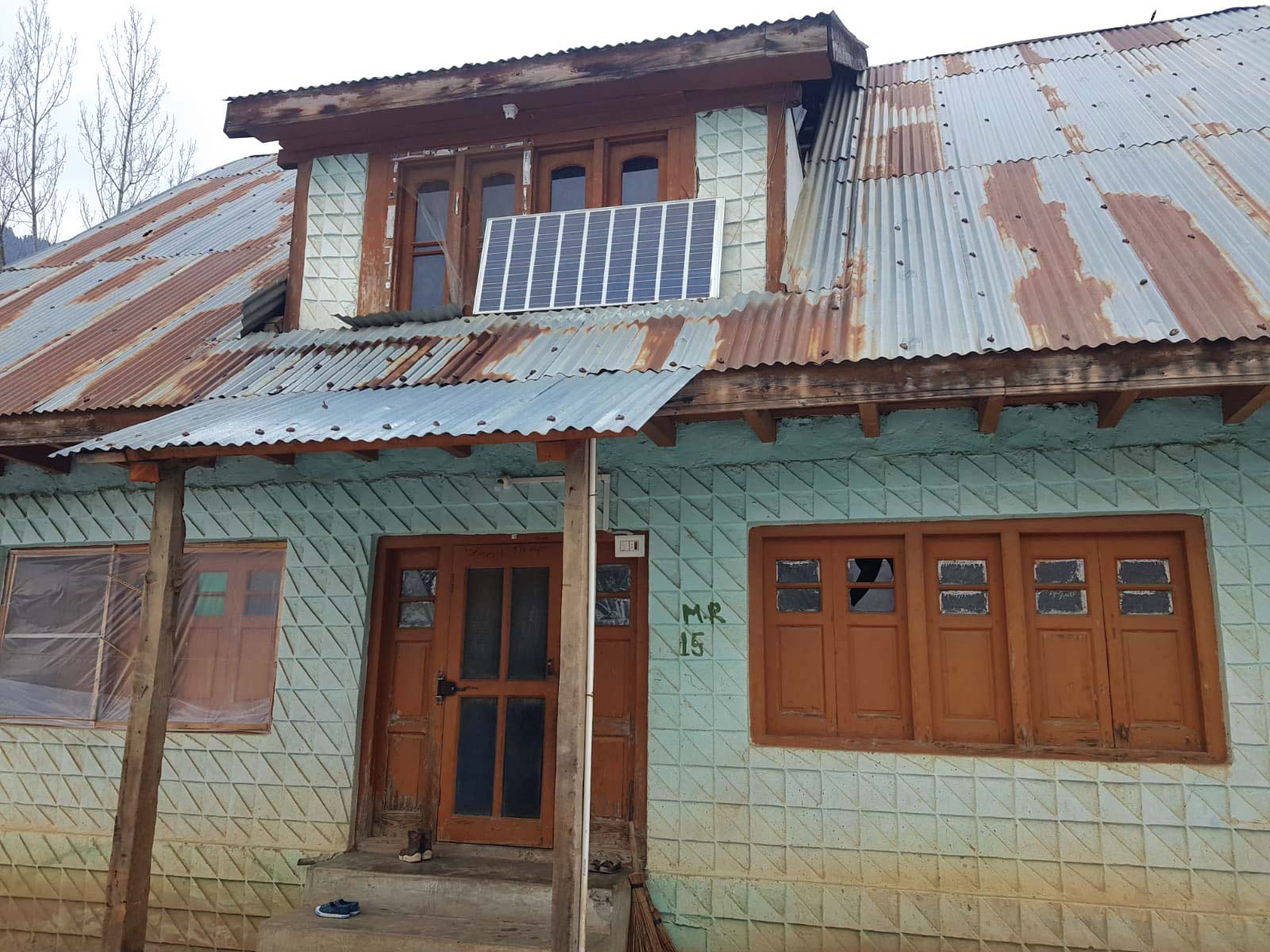
Government Plans
While the Jammu and Kashmir government was fence-sitting when Kashmir’s rural space started moving towards solar energy, the Administrative Council under Lt Governor, Manoj Sinha recently accorded sanction for installing Rooftop Solar Plants on residential houses in Jammu and Kashmir.
The central government’s Grid Connected Solar Rooftop scheme was already operational in Jammu and Kashmir under which a 40 per cent subsidy is provided by the union Ministry for Renewable Energy for installing a solar plant up to 3 KW capacity.
The government’s entry has now provided an additional 25 per cent subsidy for a solar plant up to 10KW capacity taking the effective price of a solar plant of 3KW capacity from Rs 157881 to just Rs 55258 which the consumer needs to pay.
The remaining amount of Rs 102622.65 is paid by the government to any of its 20 registered vendors who would install the plant on a residential house.
The government is providing a 5-year of replacement guarantee on the equipment even though the life of the installation is estimated at 25 years from the date of installation.
A Grid Connected Rooftop Solar Plant while providing electricity to households also provides for selling the energy to the conventional electricity grid to which it is connected.
Khalid Mehmud, Executive Engineer at JKEDA says a household with a Grid Connected Rooftop Solar Plant can save up to Rs 1500 per month on their electricity bill.
The energy produced by a rooftop solar plant isn’t wasted if a household doesn’t require it.
“The new smart metres which the discoms are installing are already bi-directional. They facilitate the transfer of energy from the rooftop to the grid when a household’s energy demand is already met,” Mehmud said.
The rooftop solar plants, unlike the Home Lighting systems, are for real-time usage rather than charging of batteries, which then provide backup.
As per official data, 400 odd Grid Connected Solar Rooftop Plants have been already installed in Jammu and Kashmir.
Another government scheme currently operational in Jammu and Kashmir is the Solar Pumping Scheme for Farmers under which irrigation pumps of 2 to 10 Horsepower are provided with a subsidy of 50 per cent from the Union Government and 30 per cent from the Jammu and Kashmir Government leading to an effective price of just Rs 30000.
The aim of the scheme is to get the farmer out of Kerosene, Diesel and Petrol-powered irrigation pumps to solar-powered ones, which would benefit the environment while helping the user save a bit of cash. The pump doesn’t require charging but works in real time.
Currently, Jammu and Kashmir has five private players listed as vendors with the government for implementing the scheme.
The government has also installed 19000 solar street lights in Jammu and Kashmir of which, however, many aren’t functioning.
Solar Plants
Under the Pradhan Mantri Kisan Urja Suraksha evam Utthaan Mahabhiyan (PM-KUSUM) scheme, solar power plants of 0.5 MW to 2 MW capacity can be built on the barren land of any person.
The land required for setting up a 1 MW solar power plant is 40 kanals which would produce 15 lakh units of electricity in a year.
The State Electricity Regulatory Commission has fixed the rate at Rs 4 per unit for the Discom when it buys from a solar plant on which the Discom also gets a subsidy of around Rs 0.35.
With the current price, a 1 MW Solar plant owner can earn around Rs 60 lakh a year by selling the electricity to any Discom.
Also, every Discom, as per the Government of India’s norms has to adhere to the Renewable Purchase Obligation under which it has to buy 18 per cent of its total electricity from a clean energy source. Solar energy has emerged as the preferred source for Discoms across the country for meeting their RPO targets as it is relatively cheaper than other clean energy including Hydropower.
As per official data, three people in Kathua district, one in Doda and one in Samba have provided land to set up solar power plants under the PM-KUSUM scheme in Jammu and Kashmir.
Hasmetullah Ahmad of Marmet in Doda has provided the highest land of 32.4 Kanals for setting up an 800 KW solar power plant. The cost of setting up the plant rests with the land provider as no incentive is provided by the government.
An official in JKEDA said that while it is difficult to find vast uncultivated land patches in Kashmir, the power plants are best suited for Jammu and Ladakh regions.
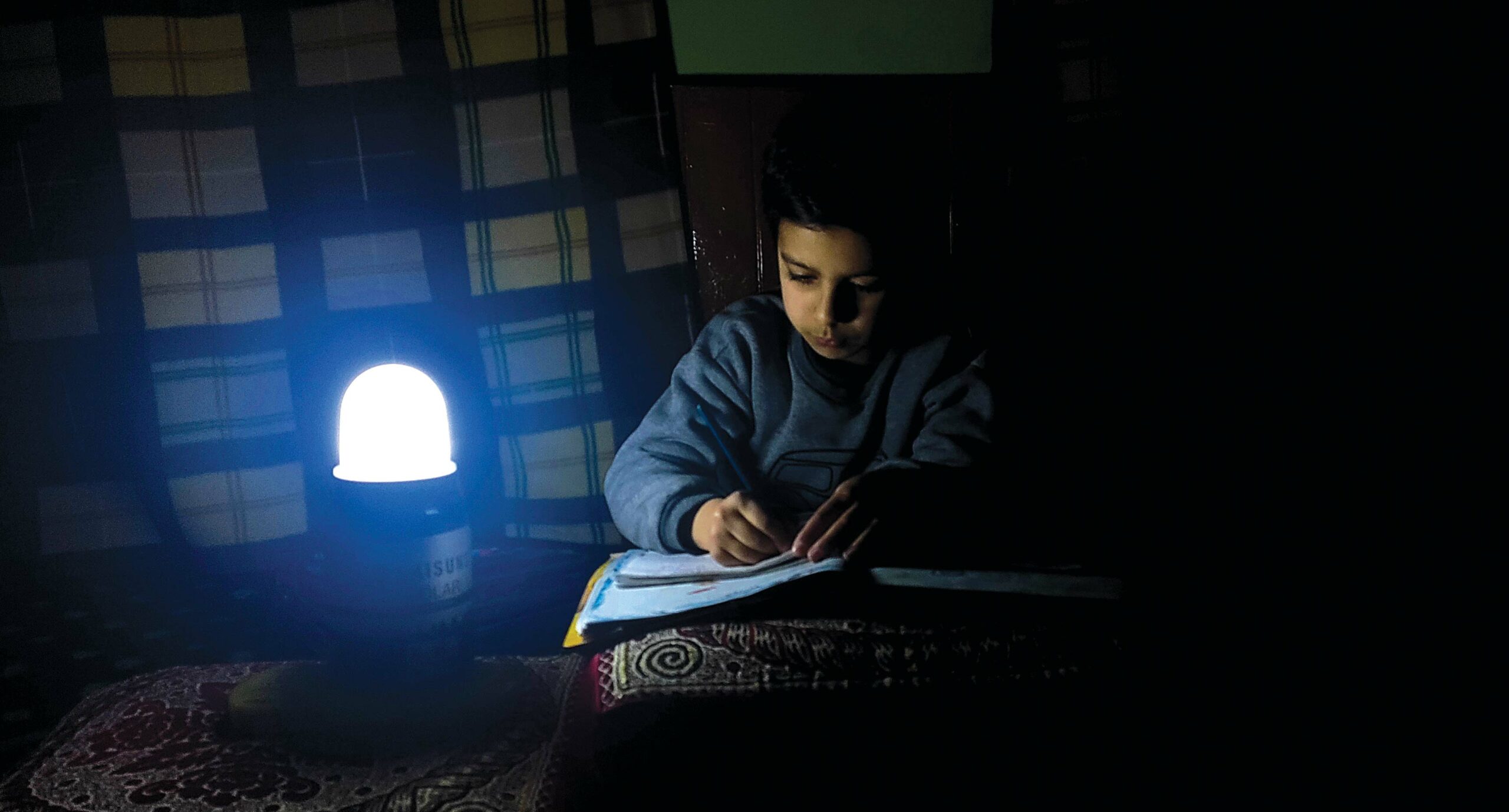
Ladakh Plans
In Ladakh, which is the second-best region after Rajasthan, for putting up solar photovoltaic power projects, because of exceptionally good sunshine, practically no heat and a dust-free atmosphere. It has the most sunshine days within the erstwhile Jammu and Kashmir state.
In his first budget after the BJP came to power in 2014, the then Finance Minister Arun Jaitley allocated Rs 500 crore for ultra-mega solar projects across the country, including one in Ladakh.
Back then the Ministry of New and Renewable Energy had stated that Ladakh would have 7.5 GW of solar projects.
Ladakh has a 60,000 sq km region of the Himalayas, with a vast barren region of hills and valleys with very little vegetation available for solar plants.
Since Ladakh was likely to use a very little part of the solar energy for itself—not more than 100 MW—it was believed that the revenue from sales of electricity to other states would be enough to power the region’s economy.
Nearly a decade down the line, not a single MW of solar plant has come up; nor there is any likelihood of anything happening anytime soon because of the Power Evacuation Infrastructure which would collect and dump the power to 220KV or above the line.
The lack of funding has led to stalling of the construction of the Power Evacuation Infrastructure. The bigger private players have been reluctant to invest in both the Union Territories for a lack of payment security mechanisms.
A top-ranking government official said that Jammu and Kashmir lacks a “conducive” environment for attracting private players who could have been asked to mandatorily sell the generated power to energy-deficient Discoms at a lower price.
“Any investor would require security but that is not the J&K government’s focus. It needs a broad and forward-looking vision.”
Technology and Apprehensions
As renewable energy sources are gaining traction in the power industry, more and more apprehensions of people regarding solar panels are being bunked. A common myth is that a solar panel atop a roof requires a clear blue sky to charge even though it only requires light to get charged.
While the energy market needs resources that can enhance renewable energy and make a positive environmental impact, vast improvements in solar energy, including design, energy storage, overall efficiency, and battery life are being witnessed on daily basis.
Building-Integrated Photovoltaics (BIPV) solar technology is built into various forms of architecture, such as roofs, canopies, facades, skylights, and more. The design of BIPV does not stick out like solar panels and is more aesthetically pleasing.
Additionally, using BIPV offers numerous benefits, including lower costs, a positive environmental impact, no carbon footprint, high energy efficiency, and more.
Research is being conducted, at many places, to integrate solar panels in the tin sheets which are spread on the roofs.
Instead of a costly solar installation, solar paints are being applied which uses the sun’s energy to generate electricity. This paint is applied to a hard surface and contains light-sensitive elements that contribute to electricity.
Solar paint is not readily available because it needs higher levels of efficiency to work, but many industry folks believe that it will be available over the next few years.
Solar windows need more time to develop before becoming commercially available. However, solar windows are made from tinted glass and are designed to transform sunlight into electricity. This innovative solution has the potential to save people energy and money in the long run.
= Solar cars are not exactly new to the market. Since solar cars contain zero emissions, many engineers are continuing to test these cars for the public domain.
Earlier this year, a Srinagar-based Mathematics teacher and innovator, Bilal Ahmed invented the affordable electric car that runs on solar energy.
From Solar cars, Solar roads are becoming a powerful initiative in multiple countries around the globe. Many believe that solar roads will reduce harmful greenhouse gas emissions. Solar panels may also be installed on solar roads, assisting drivers during rough climates and unpredictable conditions.
Solar water also referred to as the solar desalination process, converts seawater into freshwater. This process has the potential to provide for populations that need clean water and remote areas seeking off-grid desalination.
Although solar skins have not been released yet, manufacturers are actively testing this novel technology to increase its efficiency. Solar skins camouflage against any surface with a custom image, such as a roof or grassy yard. However, solar skins are currently a more costly innovation than other solar power resources.
Solar fabric for clothing is designed for warmth and energy efficiency to power up any device during travel. This innovation may cut costs on traditional solar panel installation.
With new technology, solar power can now be printed onto thin rolls of solar film. This innovative solution works to cut costs and lessen the need for solar panel installation. Solar balloons use plastic balloons to convert solar energy to solar cells. This particular solution uses existing technology systems to function, meaning it is commercially available and cost-effective.
The world is full of possibilities. The question is will Jammu and Kashmir have access to the potential of this solar volcano?











